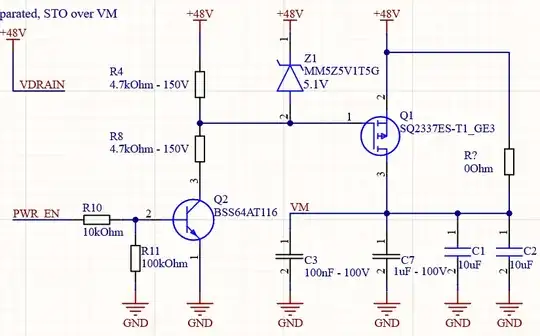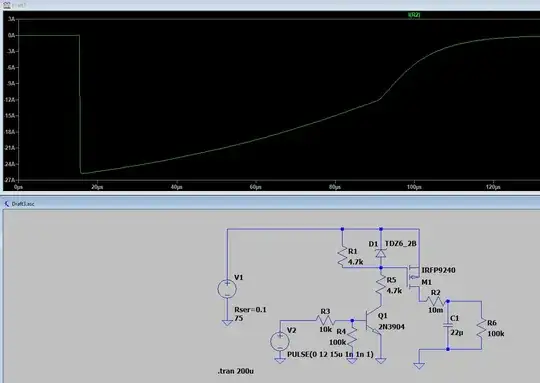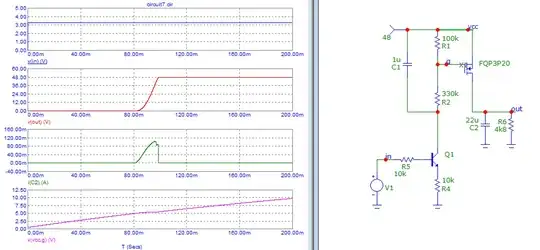I want to switch a capacitive load with a PMOS once while running, then the continous current is maximum 13mA. The capcitive load is 2x10uF X5R, 1x1uF X5R and 1x100nF X5R, so pretty low series resistance and so I expect a pretty high current. Since the continous load is so low, I don't want to pick a huge FET if possible and I think by switching slower, the maximum current will anyway be way lower.
Here is the schematics:
(The 0ohm resistor is only in case I want to bridge it)

Further I made an LTSpice simulation, this shows a pretty large current of 26A, but I could not pick the same MOSFET anyway:
Do you think this is possible to achieve with a smaller FET or should I pick one with around 60A peak?

